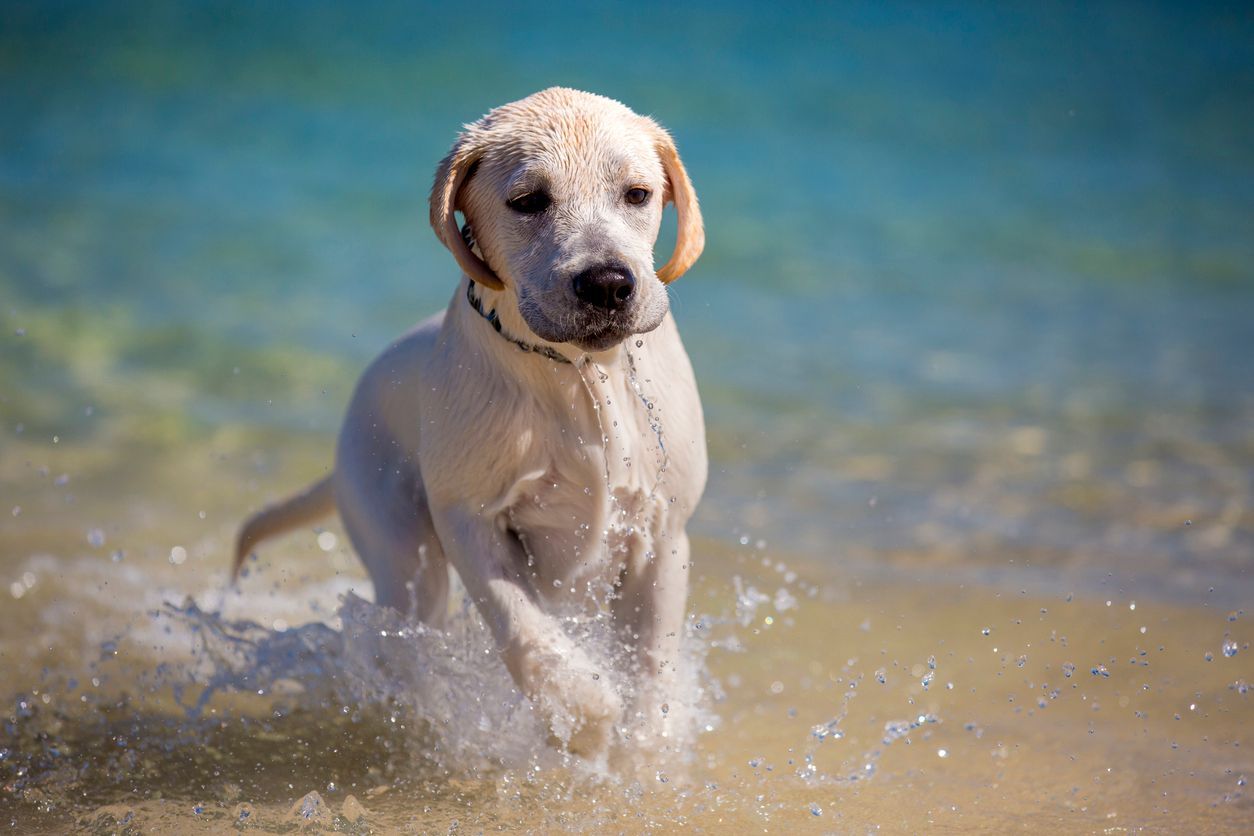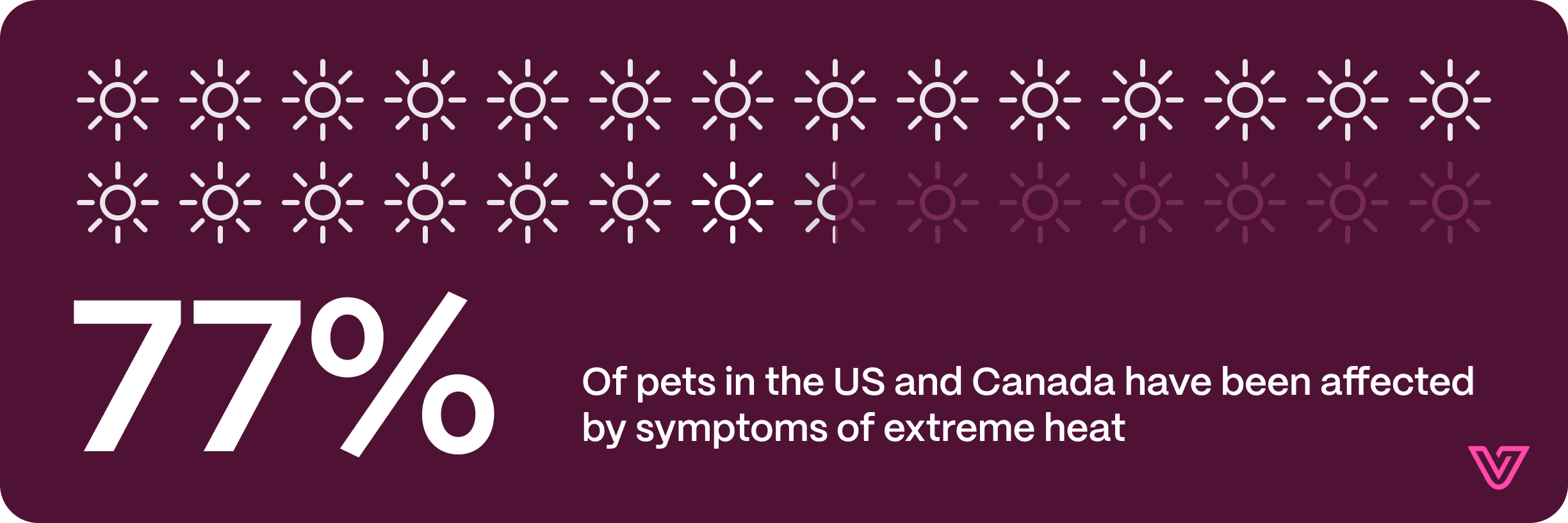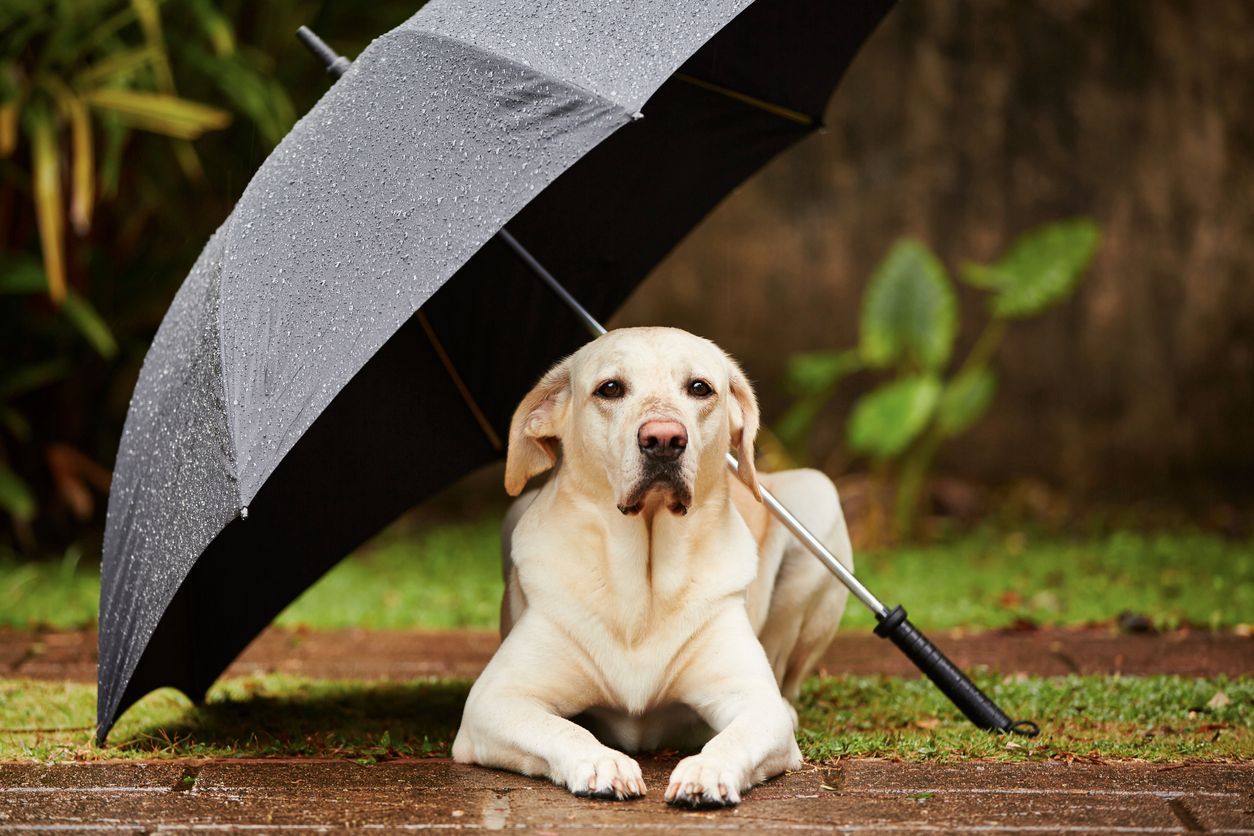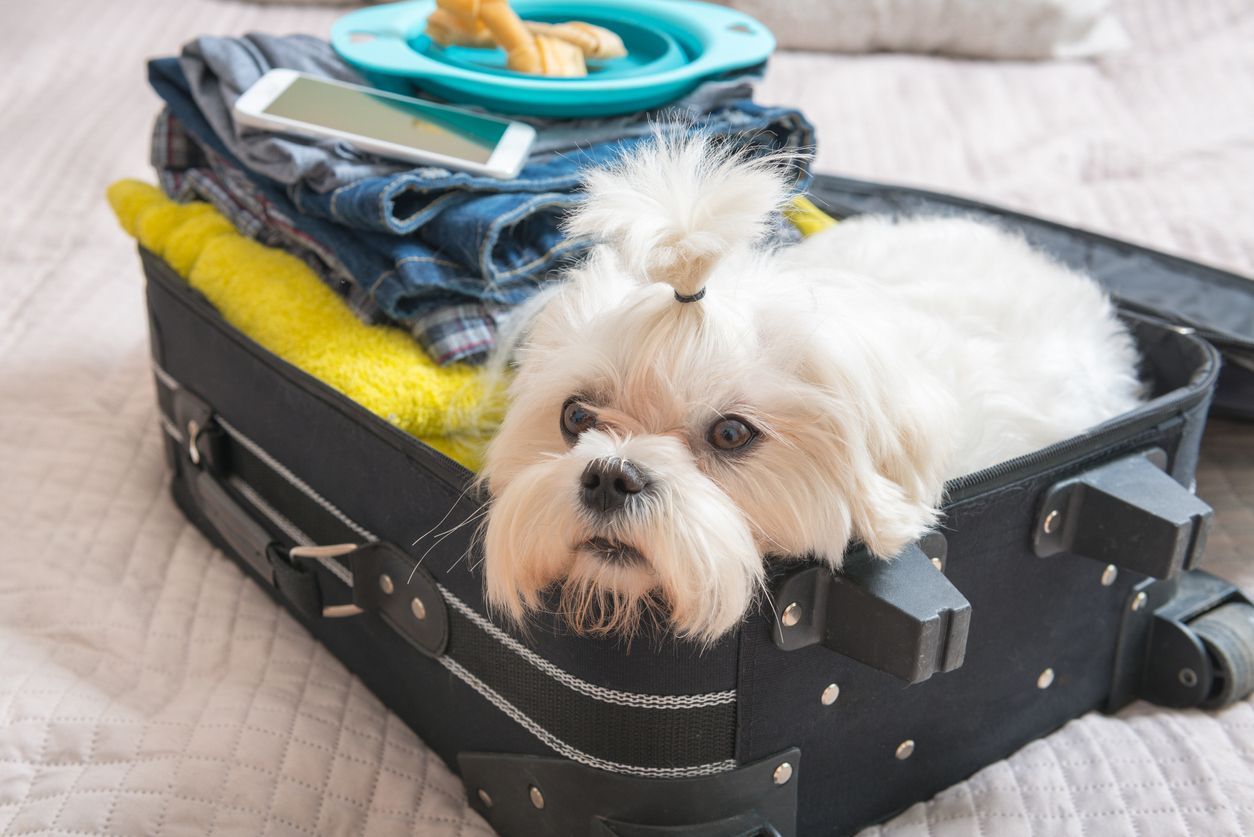6 tips to keep your dog safe in the summer heat

Extreme heat brings extreme dangers for our dogs, increasing the risk of heat stroke, heat exhaustion, and injuries. In order to keep your furry friends safe, dog owners should learn to recognize the signs of heat stress and how to prevent it. Read on to learn:
- How can excessive heat affect my dog?
- Can I keep my dog safe in hot weather?
- What are the symptoms of heat stress and heatstroke?
- How should I help my dog if they are hot?
By providing alternative methods of exercise and fun activities designed to help stay cool, pet parents can help their dogs play safe in the hot, humid summer weather. It’s important to recognize symptoms of heat-related illness to provide treatment as soon as possible.
Is hot weather dangerous for dogs?
Hot weather can become dangerous for dogs, leading to heat-related illness and injuries. Dog owners can take many precautions to keep dogs cool in the summer heat. Unfortunately, heat-related illnesses and injuries are common in dogs in the U.S. and Canada. In a survey conducted by Vetster, 77% of respondents stated their pets have had a negative experience with hot weather.

Heatstroke, heat exhaustion, and burned paw pads can occur in temperatures as low as 65 degrees F (18C). Pet parents need to recognize when their dog is beginning to overheat and take the proper steps to cool them off before it becomes life-threatening.
How can I keep my dog safe in the summer months?
All dogs can experience problems in the heat, but some are more sensitive than others. Overweight dogs, breeds with flat faces, elderly dogs, and those with other underlying medical conditions are more sensitive to high temperatures. Here are six tips to keep your dog cool.
1. Provide access to plenty of water
Dehydration can occur rapidly in warmer weather. Provide ample access to clean, fresh water both indoors and outdoors. Cool water can help keep a dog cooler than water that has had time to heat up in the sun. “Anytime you are outdoors or away from home, bring plenty of water—more than you think you will need,” warns Dr. Jo Myers, a Vetster veterinarian. “The water is used not only for drinking but also to pour on your dog to help cool them off if they begin to overheat.”
2. Avoid direct sunlight
The ambient temperature in direct sunlight can feel 10-15 degrees F (5.6-8.3C) warmer than in the shade. Simply staying in the shade helps a dog, and yourself, stay cooler and avoid sunburn. Using a fan can lower the temperature further, even outdoors. Sunburn is a concern for hairless breeds or dogs experiencing hair loss. The best way to prevent sunburn is to stay in the shade. Clothing can make a dog feel hotter, and even pet-safe sunscreen can cause stomach upset when licked off and ingested.
3. Exercise and play indoors
Avoid walking and playing outdoors when the sun is brightest and during the hottest part of the day, typically between 11 am-3 pm, though this can vary depending on where you live. There are many ways to exercise your dog and keep them entertained indoors in the air conditioning where it’s safest. Walking in air-conditioned, dog-friendly stores such as pet and hardware stores can also provide exercise and mental stimulation. In addition, indoor dog parks exist in some cities and can provide a safe place to run and play.
4. Play in the water
Water can keep dogs exercising and entertained outdoors while keeping them cool. Many dogs enjoy kiddie pools and sprinklers and visits to dog-friendly beaches and lakes. Always supervise dogs around water. Even small amounts of water can be dangerous when a dog is unsupervised. In addition, do not allow a dog to drink chlorinated, salt, or lake water, as they can cause toxicity and illness.
5. Avoid hot pavement
Asphalt and other pavement can be so hot it can cause severe burns to a dog’s paw pads. It is too hot for your dog if you cannot hold your hand or bare feet on the pavement comfortably for longer than seven seconds. Walk in the grass, in a shady spot, or indoors in a dog-friendly area. Small breeds may enjoy a stroller walk around the neighborhood, and other dogs may benefit from hot weather shoes if tolerated. Be sure to take the booties off your dog once you’re off hot pavement, because dogs sweat through their footpads to cool down.
6. Choose the right haircut
You may be tempted to shave a dog down to keep them cool as the weather gets warmer. However, this can do more harm than good. Fur acts as a natural sunscreen and insulator. Double-coated breeds use their coats to regulate their body temperature in hot weather. Work with a professional groomer to choose the best haircut for your furry friend that will protect them over the summer months.
What are the signs of heatstroke in dogs?
Heatstroke is a life-threatening emergency that occurs when body temperature rises above 105 degrees F (40.6C). At this temperature, tissues die, causing severe symptoms and potentially leading to organ failure. Symptoms of heatstroke include:
- Severe vomiting and diarrhea, often bloody
- Collapse or loss of consciousness
- Seizures
- Pale, muddy, or dark red gums
A dog will experience signs of heat exhaustion before heat stroke occurs and becomes emergent. These symptoms include:
- Heavy panting
- Frequently lying down when out for a walk or run
- Lethargy
- Seeking shade or water
If your dog experiences any of these clinical signs, cool them off immediately by bringing them indoors, offering cool water, and wetting their fur, especially around the ears, belly, and paws.
What should I do if my dog is overheating?
If a dog is showing signs of overheating, take steps to cool them down right away. Go indoors in the air conditioning if possible. Offer cool water and a place to lie down in the shade. Keeping a water bowl in the shade can entice them to spend more time and rest in a cooler area outdoors. Finally, get them wet, focusing on the areas around the ears, belly, and paws. In double-coated breeds, be sure the water soaks down to their skin. If a dog exhibits signs of heat stroke, seek emergency medical attention immediately.
Heat stroke is a medical emergency and is lethal without immediate intervention. If you have questions about keeping your dog cool this summer, you can chat with an online vet who can give you tips based on your dog’s needs.
FAQ - 6 tips to keep your dog safe in the summer heat
What are the signs of overheating in dogs?
A dog that is beginning to overheat will show signs such as rapid panting, reluctance to exercise, lethargy, and seeking shade or water. When this occurs, take steps to cool them down right away. If more serious symptoms such as vomiting, diarrhea, or collapse occur, seek emergency veterinary care immediately.
Can dogs get too hot in a house?
Dogs can overheat indoors. When you are away from home, ensure the air conditioning is set to a comfortable temperature. Closing blinds can also help keep the home cool. Ensure your dog has plenty of fresh, clean water to drink at home.
What temperature is too hot for a dog to be outside?
Different dogs have varying tolerances to heat based on breed, age, and any underlying medical conditions they may have. Heat stroke and other heat-related illnesses can occur at temperatures as low as 65 degrees F (18.3C). All dogs must be monitored in the sun and warm weather for signs of heat exhaustion.
Will my dog be ok in a heatwave?
Pet parents must take extra precautions in hot weather to keep their dogs safe. Keep dogs indoors when possible and avoid the hottest parts of the day. Monitor closely for heat exhaustion and cool them off if it occurs. Some dogs are more at risk for heatstroke than others.




